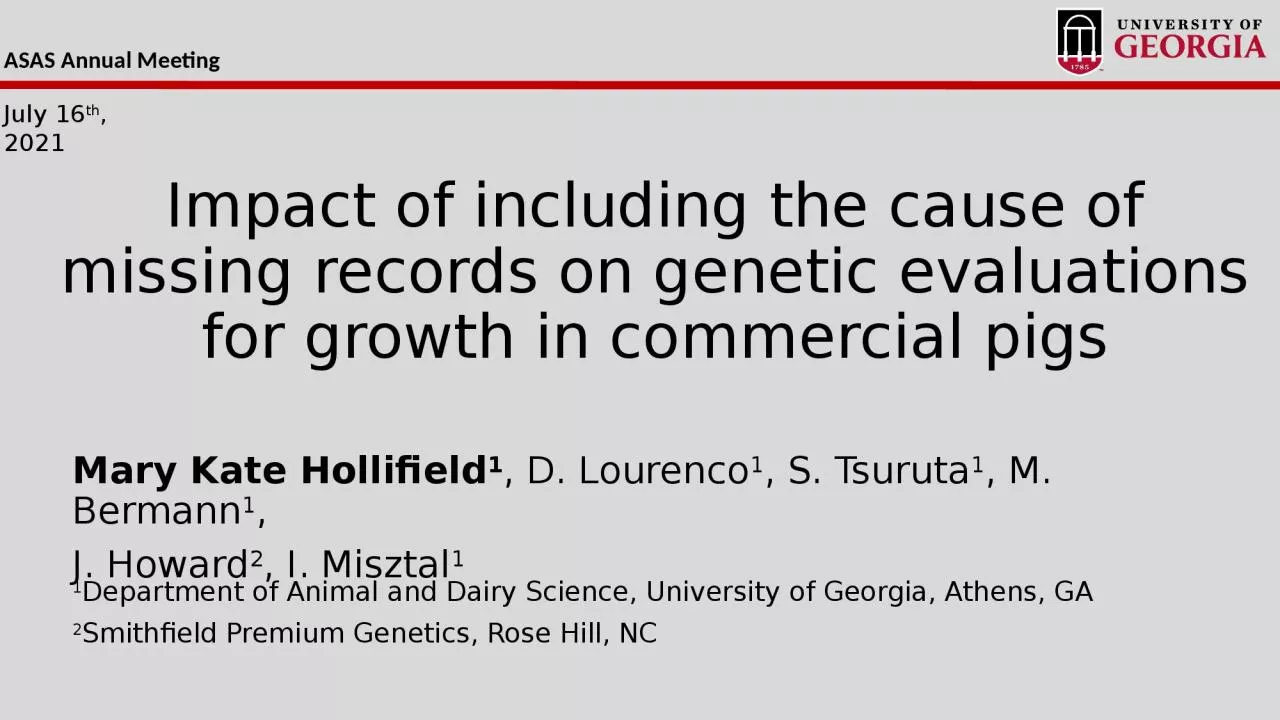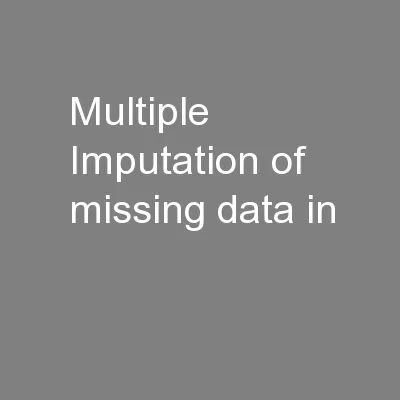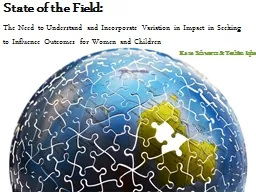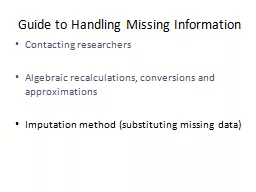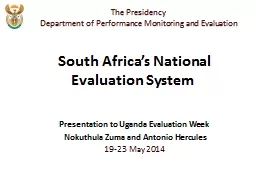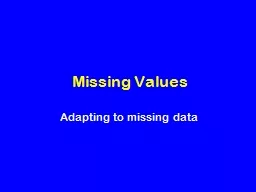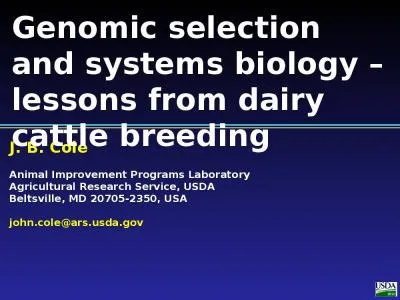PPT-Impact of including the cause of missing records on genetic evaluations for growth in
Author : DateMeDarling | Published Date : 2022-08-02
Mary Kate Hollifield 1 D Lourenco 1 S Tsuruta 1 M Bermann 1 J Howard 2 I Misztal 1 ASAS Annual Meeting July 16 th 2021 1 Department of Animal and Dairy Science
Presentation Embed Code
Download Presentation
Download Presentation The PPT/PDF document "Impact of including the cause of missing..." is the property of its rightful owner. Permission is granted to download and print the materials on this website for personal, non-commercial use only, and to display it on your personal computer provided you do not modify the materials and that you retain all copyright notices contained in the materials. By downloading content from our website, you accept the terms of this agreement.
Impact of including the cause of missing records on genetic evaluations for growth in: Transcript
Download Rules Of Document
"Impact of including the cause of missing records on genetic evaluations for growth in"The content belongs to its owner. You may download and print it for personal use, without modification, and keep all copyright notices. By downloading, you agree to these terms.
Related Documents

